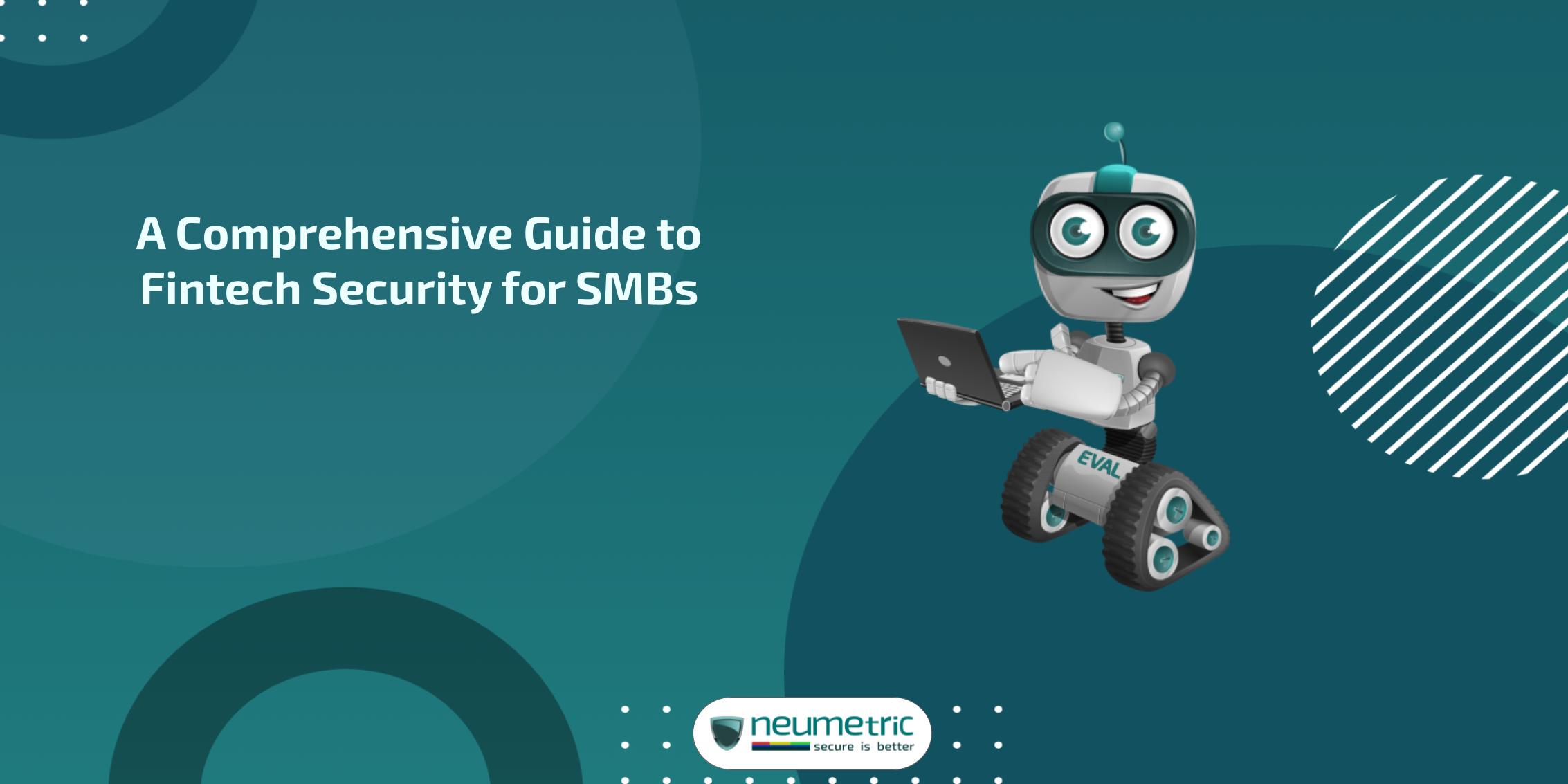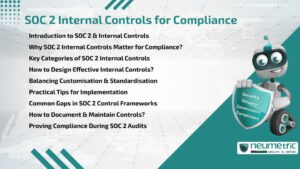Table of Contents
ToggleIntroduction
In today’s fast-paced digital economy, the rise of Financial Technology [Fintech] has revolutionized how small & medium-sized businesses [SMBs] operate. Fintech offers innovative solutions for payment processing, lending & financial management, empowering SMBs to compete with larger enterprises. However, with these advancements come significant security challenges. Ensuring robust fintech security is crucial for protecting sensitive financial data, maintaining customer trust & complying with regulatory requirements. This comprehensive journal explores the intricacies of fintech security for SMBs, offering practical strategies to safeguard their operations in an increasingly digital world.
Understanding Fintech Security
What is Fintech Security?
Fintech security encompasses a range of measures designed to protect financial technology platforms & their users from cyber threats. It involves safeguarding digital transactions, personal & financial data & ensuring compliance with industry regulations. Effective fintech security requires a multi-layered approach that includes encryption, authentication, monitoring & regular updates.
Why Fintech Security is Crucial for SMBs
For SMBs, fintech security is not just about protecting assets; it’s about sustaining business operations & reputation. A single data breach can result in significant financial losses, legal consequences & damage to customer trust. Given the increasing reliance on digital financial services, SMBs must prioritize security to mitigate risks & maintain a competitive edge.
The Landscape of Fintech Security Threats
The fintech sector faces a myriad of security threats, including:
- Cyber Attacks: Hackers often target fintech platforms to steal sensitive data or disrupt services.
- Phishing & Social Engineering: Cybercriminals use deceptive tactics to trick employees & customers into revealing confidential information.
- Insider Threats: Employees or partners with access to sensitive data can pose significant risks if they act maliciously or negligently.
- Compliance Risks: Failure to adhere to regulatory standards can result in penalties & loss of business licenses.
Key Components of Fintech Security
Encryption
Encryption is the cornerstone of fintech security. It involves converting data into a coded format that can only be deciphered with a specific key. End-to-end encryption ensures that data remains secure during transmission & storage.
Types of Encryption
- Symmetric Encryption: Uses the same key for both encryption & decryption. It’s fast & efficient for large data volumes but requires secure key management.
- Asymmetric Encryption: Uses a pair of keys – a public key for encryption & a private key for decryption. It’s more secure for transmitting data over untrusted networks.
Authentication & Access Control
Robust authentication mechanisms, such as Multi-Factor Authentication [MFA], are essential for verifying user identities. Access control systems limit who can access specific data & systems, reducing the risk of unauthorized access.
Implementing MFA
- Password: The first layer of defense, but alone it’s often insufficient.
- Biometric Authentication: Uses unique biological traits (e.g., fingerprints, facial recognition) for additional security.
- Token-Based Authentication: Involves physical or digital tokens that provide a second authentication factor.
Security Monitoring & Incident Response
Continuous monitoring of fintech platforms helps detect & respond to security threats in real-time. Incident response plans ensure that SMBs can quickly mitigate the impact of security breaches & recover their operations.
Key Elements of an Incident Response Plan
- Preparation: Develop & maintain an incident response policy & procedure.
- Identification: Detect & identify security incidents promptly.
- Containment: Implement measures to contain the impact of the incident.
- Eradication: Eliminate the root cause of the incident.
- Recovery: Restore affected systems & operations to normal.
- Lessons Learned: Analyze the incident & improve security measures.
Regulatory Compliance
SMBs must comply with various regulatory standards, such as the General Data Protection Regulation [GDPR] & the Payment Card Industry Data Security Standard [PCI DSS]. Compliance not only ensures legal protection but also enhances customer trust.
Important Regulations
- GDPR: Mandates that companies safeguard the privacy & personal information of EU individuals.
- PCI DSS: A set of security standards designed to ensure that all companies that process, store or transmit credit card information maintain a secure environment.
Practical Strategies for Enhancing Fintech Security
Conducting Risk Assessments
Regular risk assessments help identify vulnerabilities in fintech systems. By evaluating potential threats & their impact, SMBs can prioritize security measures & allocate resources effectively.
Steps in a Risk Assessment
- Identify Assets: Ascertain which systems & data require security.
- Identify Threats: Recognize potential threats & vulnerabilities.
- Assess Impact: Evaluate the potential impact of each threat.
- Mitigate Risks: Implement measures to reduce the identified risks.
Implementing Strong Password Policies
Encouraging employees & customers to use strong, unique passwords reduces the risk of unauthorized access. Password managers can help manage & generate complex passwords.
Best Practices for Password Management
- Use Long, Complex Passwords: At least twelve (12) characters, including numbers, symbols & both upper case & lower case letters.
- Avoid Reusing Passwords: A distinct password should be used for each account.
- Regularly Update Passwords: Change passwords periodically to reduce the risk of compromise.
Leveraging Multi-Factor Authentication [MFA]
By asking users to submit several kinds of authentication, MFA offers an extra degree of protection. This could be something they possess (security token), something they know (password) or something they are (biometric data).
Keeping Software & Systems Updated
Regularly updating software & systems ensures that security patches are applied promptly, reducing the risk of exploitation by cybercriminals.
Strategies for Effective Updates
- Automate Updates: Use automated tools to manage software updates.
- Monitor for Vulnerabilities: Stay informed about newly discovered vulnerabilities & apply patches promptly.
- Test Updates: Test patches in a controlled environment before deploying them to production systems.
Training Employees
Employee training programs on cybersecurity best practices are crucial. Educating staff about phishing attacks, social engineering & secure data handling can significantly reduce security risks.
Topics for Employee Training
- Recognizing Phishing Attempts: Teach employees how to identify & report phishing emails.
- Secure Data Handling: Instruct employees on how to handle sensitive information securely.
- Incident Reporting: Ensure employees know how to report security incidents promptly.
Partnering with Fintech Security Experts
Collaborating with cybersecurity firms or experts can provide SMBs with access to advanced security tools & expertise. Managed security services can offer continuous monitoring & support.
Benefits of Partnering with Experts
- Expertise: Access to specialized knowledge & skills.
- Advanced Tools: Use of cutting-edge security technologies.
- Continuous Monitoring: Round-the-clock monitoring for potential threats.
Addressing Common Fintech Security Concerns
Protecting Customer Data
Customer data protection is paramount in fintech. Implementing encryption, access controls & secure communication channels helps safeguard sensitive information.
Strategies for Data Protection
- Encrypt Data: Use encryption to protect data both in transit & at rest.
- Access Controls: Limit access to sensitive data to authorized personnel only.
- Secure Communication: Use secure communication protocols such as SSL/TLS.
Ensuring Compliance
Adhering to regulatory standards involves understanding & implementing the necessary security measures. Regular audits & compliance checks help ensure ongoing adherence to legal requirements.
Responding to Security Incidents
A robust incident response plan outlines the steps to take in the event of a security breach. This includes identifying the breach, containing it, eradicating the threat & recovering operations.
Balancing Security with User Experience
While security is crucial, it should not hinder the user experience. Implementing user-friendly security measures, such as biometric authentication, can enhance security without compromising convenience.
The Future of Fintech Security
Emerging Technologies
Emerging technologies, such as Artificial Intelligence [AI] & blockchain, are poised to revolutionize fintech security. AI can enhance threat detection & response, while blockchain offers secure, tamper-proof transaction records.
AI in Fintech Security
- Predictive Analytics: AI can predict potential threats based on historical data.
- Automated Response: AI can automatically respond to detected threats, reducing response time.
Blockchain Security
- Immutable Records: Transactions recorded on a blockchain cannot be altered, ensuring data integrity.
- Decentralization: A decentralized approach reduces the risk of a single point of failure.
Evolving Threat Landscape
As cyber threats evolve, so must fintech security strategies. SMBs need to stay informed about the latest threats & continuously adapt their security measures.
Regulatory Changes
Regulatory frameworks will continue to evolve, impacting fintech security requirements. SMBs must stay abreast of changes & ensure their compliance strategies are up-to-date.
Preparing for Regulatory Changes
- Stay Informed: Keep up with regulatory news & updates.
- Adapt Quickly: Implement necessary changes promptly to remain compliant.
- Consult Experts: Work with legal & cybersecurity experts to navigate complex regulations.
Collaboration & Information Sharing
Collaboration between fintech companies, cybersecurity firms & regulatory bodies can enhance security across the industry. Information sharing about threats & vulnerabilities can lead to more effective defenses.
Benefits of Collaboration
- Shared Knowledge: Access to collective expertise & experience.
- Coordinated Defense: Unified efforts to tackle common threats.
- Regulatory Support: Better alignment with regulatory requirements through shared insights.
Conclusion
Fintech security is a critical concern for SMBs navigating the digital financial landscape. By implementing robust security measures, staying informed about emerging threats & ensuring regulatory compliance, SMBs can protect their operations & foster customer trust. As the fintech industry continues to evolve, so too must the security strategies employed by SMBs. By prioritizing fintech security, SMBs can confidently leverage technological advancements to drive growth & innovation.
Key Takeaways
- Fintech security is essential for protecting sensitive financial data & maintaining customer trust.
- Key components of fintech security include encryption, authentication, monitoring & regulatory compliance.
- Practical strategies for enhancing fintech security involve risk assessments, strong password policies, MFA, software updates, employee training & expert collaboration.
- Addressing common fintech security concerns ensures comprehensive protection & compliance.
- Emerging technologies & evolving threats require SMBs to continuously adapt their fintech security measures.
Frequently Asked Questions [FAQ]
What are the most common fintech security threats for SMBs?
The most common threats include cyber attacks, phishing, insider threats & compliance risks. Cybercriminals often target fintech platforms to steal sensitive data or disrupt services.
How can SMBs ensure compliance with fintech security regulations?
SMBs can ensure compliance by understanding relevant regulations, implementing necessary security measures & conducting regular audits. Partnering with legal & cybersecurity experts can also help maintain compliance.
What role does encryption play in fintech security?
Encryption protects data by converting it into a coded format that can only be deciphered with a specific key. It ensures that data remains secure during transmission & storage, preventing unauthorized access.
How often should SMBs update their fintech security measures?
SMBs should continuously monitor & update their security measures. Regular risk assessments, software updates & security audits help maintain robust protection against evolving threats.
Why is employee training important for fintech security?
Employees are often the first line of defense against cyber threats. Training programs educate staff about cybersecurity best practices, reducing the risk of security breaches due to human error.





